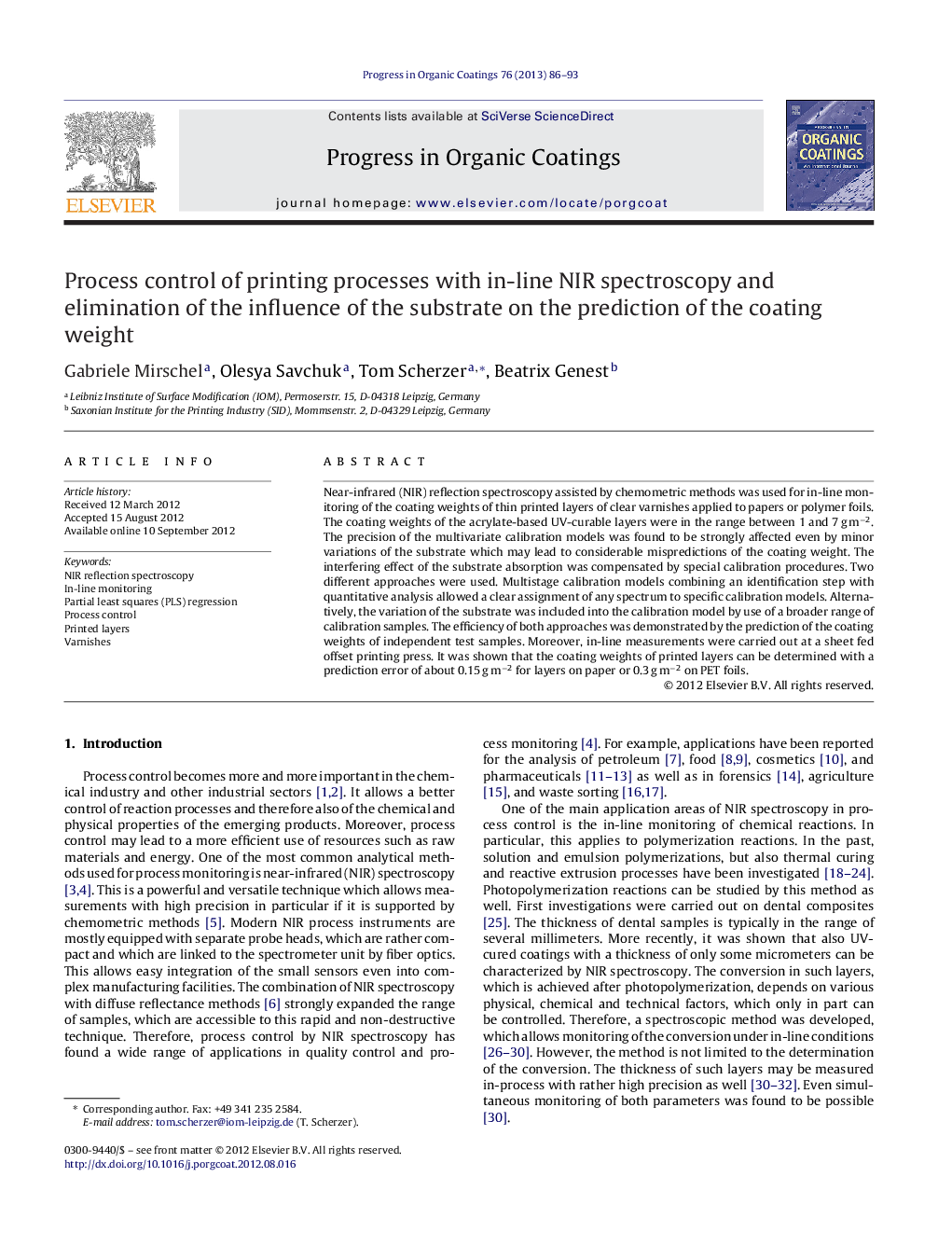| Article ID | Journal | Published Year | Pages | File Type |
|---|---|---|---|---|
| 692786 | Progress in Organic Coatings | 2013 | 8 Pages |
Near-infrared (NIR) reflection spectroscopy assisted by chemometric methods was used for in-line monitoring of the coating weights of thin printed layers of clear varnishes applied to papers or polymer foils. The coating weights of the acrylate-based UV-curable layers were in the range between 1 and 7 g m−2. The precision of the multivariate calibration models was found to be strongly affected even by minor variations of the substrate which may lead to considerable mispredictions of the coating weight. The interfering effect of the substrate absorption was compensated by special calibration procedures. Two different approaches were used. Multistage calibration models combining an identification step with quantitative analysis allowed a clear assignment of any spectrum to specific calibration models. Alternatively, the variation of the substrate was included into the calibration model by use of a broader range of calibration samples. The efficiency of both approaches was demonstrated by the prediction of the coating weights of independent test samples. Moreover, in-line measurements were carried out at a sheet fed offset printing press. It was shown that the coating weights of printed layers can be determined with a prediction error of about 0.15 g m−2 for layers on paper or 0.3 g m−2 on PET foils.
Graphical abstractFigure optionsDownload full-size imageDownload as PowerPoint slideHighlights► The coating weight of printed varnish layers was determined by NIR spectroscopy. ► The coating weights were in the range from 1 to 7 g m−2. ► The influence of the substrate was compensated by special calibration procedures. ► In-line monitoring of the thickness was carried out at an offset printing press. ► Coatings weights were predicted with a precision up to 0.13 g m−2.
